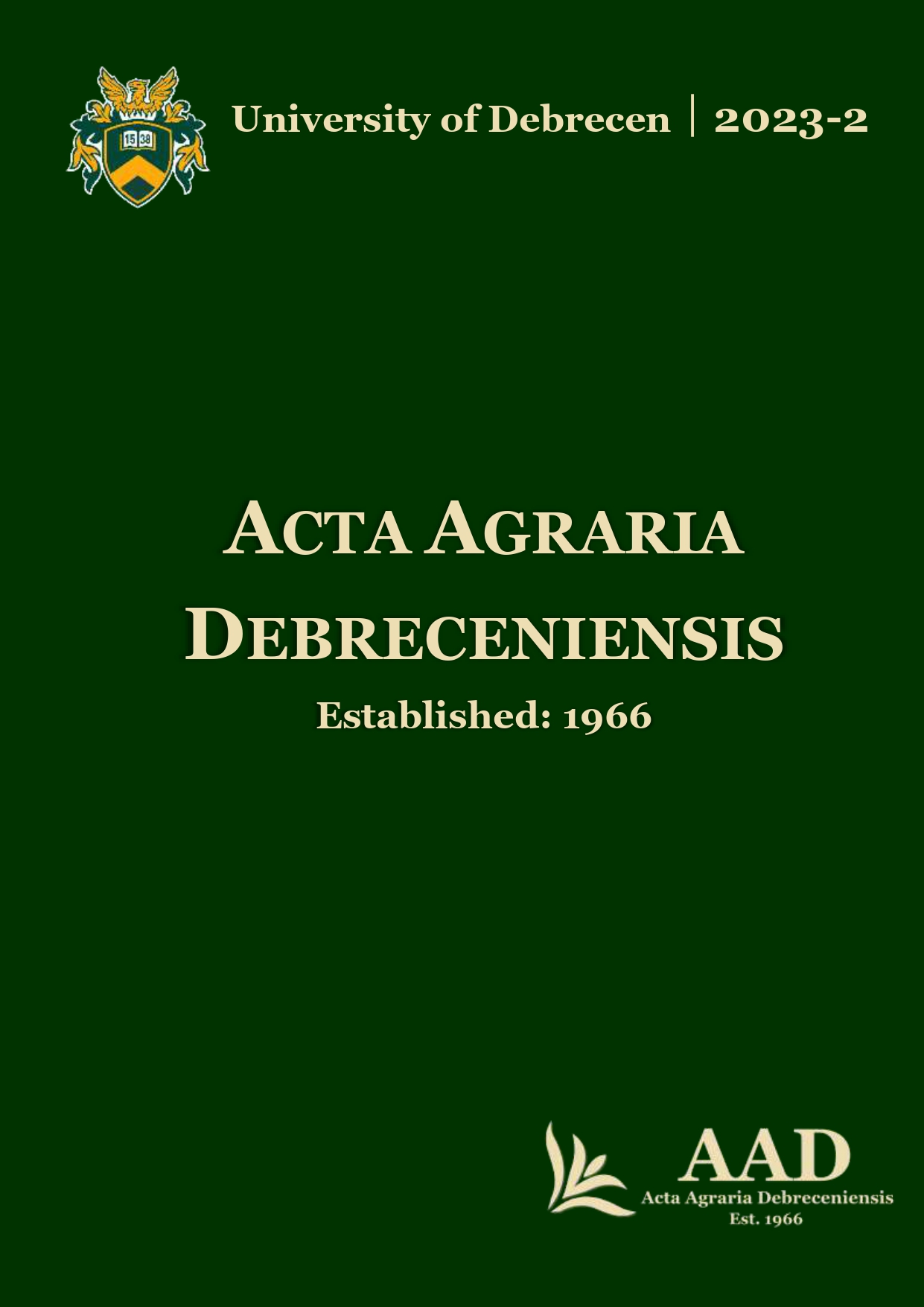Comparing the yield of maize (Zea mays L.) hybrids in organic and conventional agriculture
Authors
View
Keywords
License
Copyright (c) 2023 by the Author(s)

This work is licensed under a Creative Commons Attribution 4.0 International License.
How To Cite
Accepted 2023-09-26
Published 2023-12-01
Abstract
The European Green Deal was published by the European Commission in 2019. The main aim of the program is to reach net zero greenhouse gas emissions by 2050, making Europe the first climate-neutral continent in the world. To achieve this, criteria are also set for agriculture: increasing the share of land under organic farming to 25%, reducing the use of fertilisers and pesticides. However, the benefits of organic farming are widely debated. The aim of our study was to compare the yield of maize (Zea mays L.) hybrids bred in Martonvasar in two different cropping environments. The silage yields of 20 different maize hybrids were evaluated in a three replicate small plot experiment in an organic field and an adjacent conventional field. The average green mass yield of the hybrids was 36,58 t ha-1 in the organic field and 43,03 t ha-1 in the conventional. The green mass yield in the organic area was 20% lower than in the conventional area, and the dry matter yield and digestible dry matter yield were about 18% lower. Hybrids of different maturity groups responded differently to organic cultivation. The yields of early hybrids decreased more and late hybrids less in the organic farming compared to the conventional production.
References
- Beek, C.L. va.–Meerburg, B.G.–Schils, R.L.M.–Verhagen, J.–Kuikman, P.J. (2010): Feeding the world’s increasing population while limiting climate change impacts: linking N2O and CH4 emissions from agriculture to population growth. Environmental Science and Policy, 13, 2, 89–96. https://doi.org/10.1016/j.envsci.2009.11.001.
- Connor, D.J. (2008): Organic agriculture cannot feed the world. Field Crops Research, 106, 2, 187–90. https://doi.org/10.1016/j.fcr.2007.11.010.
- Drexler, D.–Varga, K. - Allacherné Szépkuthy, K. (2022): A hazai ökológiai gazdálkodás fejlesztési terve az EU irányelvek tükrében. In: XXVIII. Növénynemesítési Tudományos Napok, edited by Polgár, Z., I. Karsai, L. Bóna, J. Matuz, and J. Taller, 12–17. Keszthely, Magyarország: Magyar Növénynemesítők Egyesülete.
- EUR-Lex 2021: https://eur-lex.europa.eu/legal-content/HU/TXT/?qid=1576150542719&uri=COM%3A2019%3A640%3AFIN (September 2021)
- European Commission 2021a: https://ec.europa.eu/info/strategy/priorities-2019-2024/european-green-deal_hu (September 2021)
- European Commission 2021b: https://ec.europa.eu/commission/presscorner/detail/hu/QANDA_20_885 (September 2021)
- Gov. HU. 2022: https://kormany.hu/dokumentumtar/nemzeti-cselekvesi-terv-az-okologiai-gazdalkodas-fejleszteseert (September 2022)
- Kniss, A.R.–Savage, S.D.–Jabbour, R. (2016): Commercial crop yields reveal strengths and weaknesses for organic agriculture in the United States. PLoS ONE, 11, 8, 1–16. https://doi.org/10.1371/journal.pone.0161673
- Meng, F.–Qiao, Y.–Wu, W.–Smith, P.–Scott, S. (2017): Environmental impacts and production performances of organic agriculture in China: A monetary valuation. Journal of Environmental Management, 188, 2, 49–57. https://doi.org/10.1016/j.jenvman.2016.11.080.
- KSH 2023: https://www.ksh.hu/interaktiv/grafikonok/vilag_nepessege.html (March 2023)
- KSH 2022a: https://www.ksh.hu/stadat_files/mez/hu/mez0008.html (October 2022)
- KSH 2022b: https://www.ksh.hu/stadat_files/mez/hu/mez0038.html (October 2022)
- Ponti, T. De–Rijk, B.–Ittersum, M.K. Van. (2012): The crop yield gap between organic and conventional agriculture. Agricultural Systems, 108, 1–9. https://doi.org/10.1016/j.agsy.2011.12.004.
- Trewavas, A. (2001): Urban myths of organic farming. Nature, 410, 6827, 409–10. https://doi.org/10.1038/35068639.
- Vogel, E.–Donat, M.G.–Alexander, L.V.–Meinshausen, M.–Ray, D.K.–Karoly, D.–Meinshausen, N.–Frieler, K. (2019): The effects of climate extremes on global agricultural yields. Environmental Research Letters, 14, 5, 054010. https://doi.org/10.1088/1748-9326/ab154b.
- Willer, H.–Trávníček, J.–Meier, C.–Schlatter, B. (2022): The world of organic agriculture: Statistics and emerging trends 2022. Edited by Helga Willer, Jan Trávníček, Claudia Meier, and Bernhard Schlatter. International Journal of Sustainability in Higher Education. Frick, Switzerland: Research Institute of Organic Agriculture FiBL & IFOAM – Organics International, pp. 345. https://doi.org/10.1108/ijshe.2009.24910aae.004.

 https://doi.org/10.34101/actaagrar/2/12574
https://doi.org/10.34101/actaagrar/2/12574